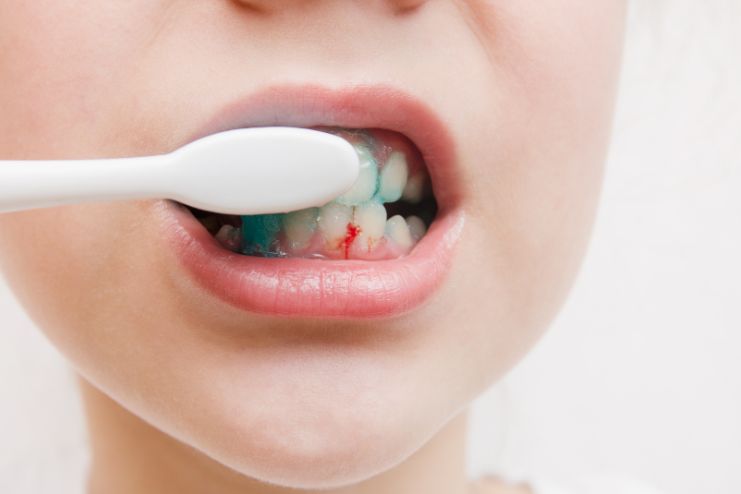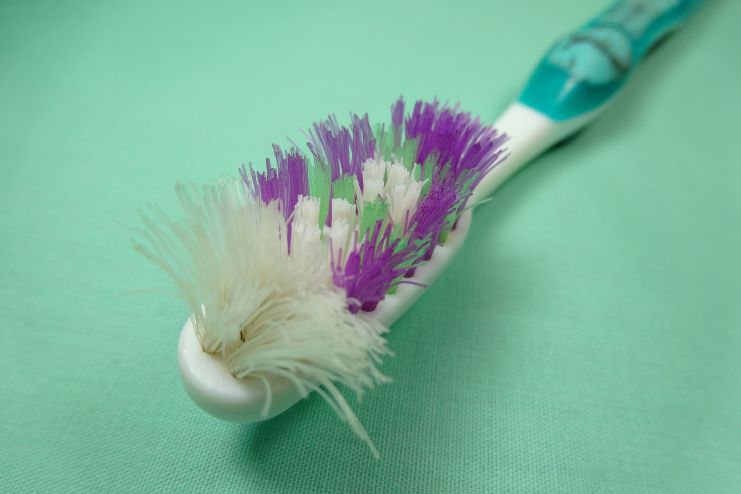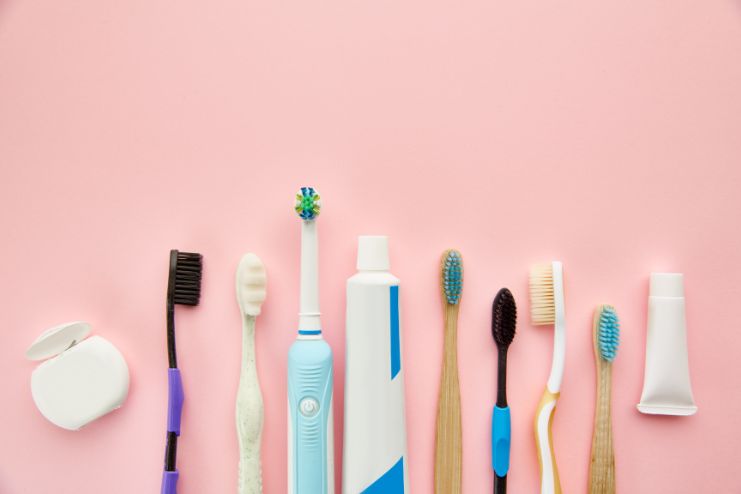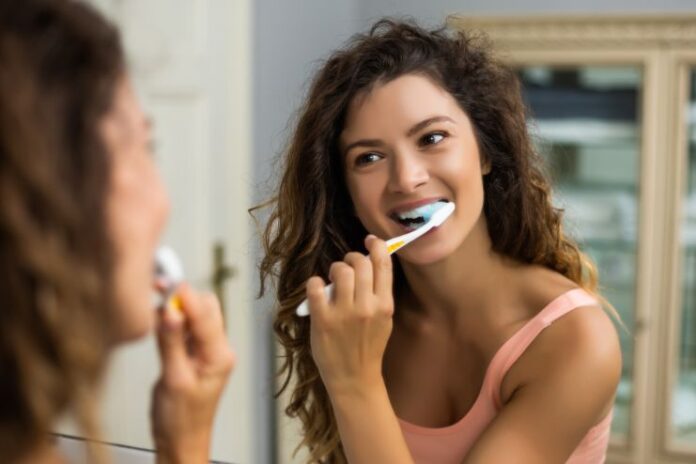Affiliate Disclaimer
Some links in this article are affiliate links. We may earn a small commission if you make a purchase through these links, at no extra cost to you. We only recommend products we find useful to our readersBrushing your teeth is essential to good oral hygiene, but have you ever considered how often and how long you brush? Many people believe that brushing more frequently or applying extra pressure will make their teeth cleaner and healthier. However, brushing too often or too aggressively can do more harm than good.
Overbrushing, also known as toothbrush abrasion, occurs when excessive force or frequent brushing wears down the protective enamel on your teeth and irritates your gums.
Overbrushing removes the surface layer of enamel, making teeth more susceptible to decay, discoloration, and gum disease. Understanding the proper techniques and equipment to keep your mouth at its best is important. Let’s examine the signs of overbrushing, its effect on oral health, and the best practices to keep your smile strong and healthy.
Read More: Best Oral Care Products for Healthier Teeth and Gums (Dentist-Approved Essentials).
What Is Overbrushing?
Overbrushing happens when you brush too often, brush too hard, or use a toothbrush with hard bristles. This can lead to enamel erosion, gum recession, tooth sensitivity, and even an increased risk of cavities. In severe cases, overbrushing can expose the tooth’s inner layers, making it more vulnerable to decay and requiring restorative dental treatments.
While it’s important to maintain a clean and healthy smile, more brushing doesn’t always mean better oral health. The key is to brush correctly, using the right technique, toothbrush, and pressure to protect your teeth rather than harm them.
5 Signs You’re Overbrushing
If you’re feeling oral pain even though you’re maintaining your brushing schedule, you may be overbrushing. Overbrushing doesn’t only hurt your teeth—it can harm your gums and even alter the look of your smile. Here are five important warning signs to look out for:
1. Bleeding or Receding Gums:

Bleeding gums occasionally can be caused by flossing or gum disease, but frequently bleeding after brushing could be a sign of overbrushing. Brushing too hard wears away gum tissue, causing recession and exposing the roots of teeth.
Gum recession can make your teeth look longer and cause tooth sensitivity, making you more susceptible to decay and infection. With gum recession, bacteria may collect in the exposed pockets, raising the risk of periodontal disease.
Read More: 14 Natural Remedies For Receding Gums For A Better Oral Health
2. Increased Tooth Sensitivity:

You may experience discomfort when consuming hot, cold, or sweet food if overbrushing is to blame. The enamel layer erodes gradually if you brush harshly, causing the dentin layer, with its nerve endings that respond to temperature, to be exposed. This can become painful and unpleasant for simple acts such as consuming a cold drink or having a warm meal.
Tooth sensitivity can also be an indication that your enamel is becoming thinner, resulting in a higher chance of cavities.
3. Visible Notches Along the Gum Line:
Overbrushing can lead to enamel loss that forms small notches or grooves along your gum line. These notches are irreversible and can make your teeth more susceptible to fractures and cavities. If not treated, this can necessitate bonding or fillings to fix the damaged area and avoid further damage.
Severe cases might require more serious treatments, such as gum grafting or enamel reconstruction.
4. Frayed Toothbrush Bristles:

A new toothbrush should last 2–3 months, but if your bristles appear frayed or bent after just a few weeks, you’re probably brushing with too much force. Soft-bristled toothbrushes are recommended by dentists because they clean effectively without being overly harsh on your enamel and gums.
An electric toothbrush with a built-in pressure sensor can be a great option to prevent excessive force while brushing.
5. Teeth Appear Yellow or Dull:
Brushing harder won’t make your teeth whiter! Overbrushing can erode the white enamel, revealing the yellowish dentin underneath. This is a sign that you must slow down on brushing through the day.
If you’re scrubbing aggressively in an attempt to remove stains, consider using a whitening toothpaste or professional whitening treatments instead.
Read More: How To Deal With My Bleeding Gums?
How Overbrushing Damages Your Teeth and Gums
Many people believe that brushing harder or more frequently leads to cleaner, healthier teeth. However, overbrushing can have the opposite effect, causing lasting damage to both teeth and gums.
Excessive brushing can lead to enamel erosion, gum recession, and increased sensitivity, ultimately making your teeth more vulnerable to decay and other dental issues. Understanding the consequences of overbrushing can help you adjust your oral hygiene routine to maintain a healthy balance.
- Enamel Wear: Overbrushing strips away enamel, the protective outer layer of your teeth, making them more vulnerable to decay, staining, and sensitivity.
- Gum Recession: Brushing too aggressively can cause gums to recede, exposing tooth roots and increasing the risk of decay and infections.
- Risk of Gum Infections: Tiny micro tears in the gums caused by overbrushing can allow bacteria to enter, leading to inflammation, infections, and gum disease.
- Increased Need for Dental Work: Over time, enamel loss and gum recession can lead to a greater need for fillings, gum grafts, or restorative dental treatments.
Read More: Naturally Fresh: The Top 7 Fluoride-Free Toothpastes for a Healthy Smile.
Brush Your Teeth The Right Way

Good brushing habits are essential for maintaining oral health. It’s not just about how often you brush, but also about the technique and tools you use. Many people unknowingly brush too hard, use the wrong toothbrush, or brush for longer than necessary. While proper oral hygiene is key, overbrushing can actually damage enamel and gums.
Understanding the correct brushing techniques and selecting the right tools can help you maintain a clean, healthy smile without the risk of harm.
Tips for Proper Brushing
How Often Should You Brush?
Brushing twice a day for two minutes is generally sufficient to maintain oral health. Brushing more often or for longer than this can erode enamel and lead to other dental issues.
Correct Brushing Technique
- Use gentle circular motions instead of scrubbing back and forth.
- Hold your toothbrush at a 45-degree angle to your gums.
- Don’t apply too much pressure; let the bristles do the work.
Incorporate Mouthwash and Flossing
- Mouthwash helps protect your enamel, prevent decay, and freshen your breath.
- Flossing every day removes plaque and food particles from between your teeth, helping to prevent cavities, decay, and bad breath.
Choose the Right Tools

Brushing properly is crucial, but having the right tools is a game-changer. Most individuals use toothbrushes that are too abrasive without realizing it or neglect to replace them frequently. This negligence can lead to enamel loss and harm the gum or teeth.
Selecting the correct toothbrush and replacing it regularly is crucial for protecting your teeth and gums from the negative effects of overbrushing.
In addition to your toothbrush, consider incorporating flossing and mouthwash into your routine. These steps help protect your teeth and gums against plaque and bacteria.
Selecting the Right Toothbrush: Manual vs. Electric
Both manual and electric toothbrushes can effectively clean your teeth, but electric toothbrushes may offer an extra advantage. Many electric brushes come with built-in pressure sensors that help prevent overbrushing and minimize the risk of damage.
If you’re interested in electric toothbrushes, here are two top recommendations:
Manual toothbrushes, when used correctly, can also provide excellent results. A couple of our top picks for manual brushes include:
Regardless of which toothbrush you choose, always select a soft-bristled toothbrush to protect enamel and gums. Opt for a small brush head that can reach the back of your mouth.
To ensure your toothbrush works effectively, replace it every 3 months or sooner if the bristles are worn down.
Choosing the Best Toothpaste for Enamel Protection
Fluoride toothpaste is the best choice for strengthening enamel and preventing decay. If you have tooth sensitivity, consider a toothpaste formulated specifically for that purpose.
Here are two of our favorite toothpaste options:
- Colgate Optic White Charcoal Whitening Toothpaste
- Boka Fluoride Free Toothpaste Nano Hydroxyapatite for Sensitive Teeth
Read More: White Spots on Teeth – All You Need to Know.
Final Thoughts: Finding a Healthy Balance

Brushing your teeth is essential for oral hygiene, but do not overdo it. Overbrushing wears down enamel, causes gum recession, and heightens sensitivity, creating long-term dental issues. With the correct brushing techniques and the proper equipment, you can guard your teeth and gums and keep your smile in great health.
If you feel you have been overbrushing, it is never too late to change your technique. Changing to a soft-bristled toothbrush, using gentle pressure, and brushing in a circular motion can avoid further damage. Regular dental checkups also detect any signs of overbrushing and offer advice on how to maintain a balanced oral care routine.
A good balanced brushing habit keeps your teeth strong, gums healthy, and your smile a million-dollar one!
References
- https://dentistinacworth.com/blog/are-you-brushing-correctly-the-right-way-to-brush-for-optimal-oral-health/
- https://www.kingwooddentistry.com/post/hard-brushing-cause-gum-disease/
- https://curaprox.in/info/replace_your_toothbrush
- https://www.kingwooddentistry.com/post/hard-brushing-cause-gum-disease/
- https://perforacare.com/blogs/toothbrush-tips/what-is-overbrushing
- https://www.webmd.com/oral-health/receding_gums_causes-treatments
In this Article

















